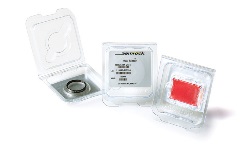-
How to Calculate Luminosity Dominant Wavelength and Excitation Purity
by IDEX Health & ScienceIn this article we briefly describe the method to calculate the three main parameters that fully specify color in this system: luminosity, dominant wavelength, and excitation purity.
Full story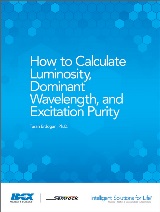
-
Leica Cube Assembly Quick How-To Guide
by IDEX Health & ScienceExplore our step by step guide to add a Semrock optical filter set to Leica DM-K, DM-R and DM-IRB cubes.
Full story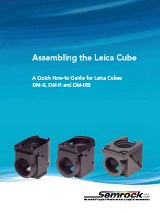
-
Zeiss ZHE Cube Assembly Quick How-To Guide
by IDEX Health & ScienceExplore our step by step guide to add a Semrock optical filter set to a Zeiss ZHE cube.
Full story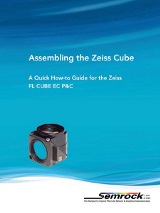
-
Zeiss Threaded Filter Cube Assembly Quick How-To Guide
by IDEX Health & ScienceExplore our step by step guide to add a Semrock optical filter set to a Zeiss Threaded Filter cube.
Full story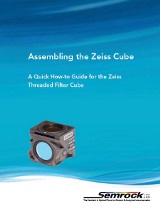
-
Nikon TE2000 Cube Assembly Quick How-To Guide
by IDEX Health & ScienceExplore our step by step guide to add a Semrock optical filter set to a Nikon TE2000 Cube.
Full story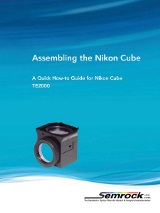
-
Nikon Quadfluor Cube Assembly Quick How-To Guide
by IDEX Health & ScienceExplore our step by step guide to add a Semrock optical filter set to a Nikon Quadfluor Cube.
Full story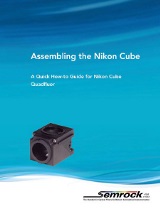
-
Olympus Cube Assembly Quick How-To Guide
by IDEX Health & ScienceExplore our step by step guide to add a Semrock optical filter set to an Olympus U-MF2 Cube and an Olympus U-MF/XL cube.
Full story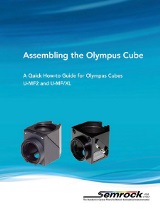
-
Periodic Table of Analytical Fittings Poster
by IDEX Health & ScienceOur Periodic Table of Analytical Fittings illustrates over 100 analytical fittings’ pressure rating, tubing size, head style, fitting material, and torque required.
Full story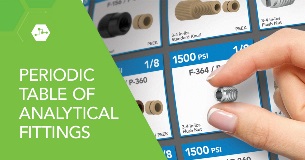
-
Fluidics Tech Tips
by IDEX Health & ScienceExplore our tech tips and find technical topics from Avoiding Pressure Transients to how to choose a Sample Loop.
Full story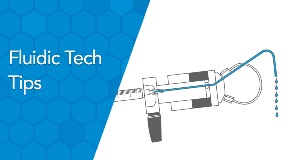
-
Microfluidic Definitions & Specs
by IDEX Health & ScienceLearn about Microfluidic Definitions and Specifications to assist in your understanding of Microfluidic applications. Full story -
Physics of Pixel Shift
by IDEX Health & ScienceIn multicolored fluorescence microscopy, pixel shift can cause imaging errors, which can lead to erroneous interpretation of biological data. This article highlights some key considerations in the design of optical filter sets with “zero pixel shift” (less than one pixel error) performance.
Full story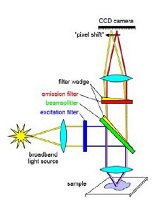
-
Injectors Troubleshooting Guide
by IDEX Health & ScienceOur troubleshooting guide provides solutions to common problems encountered when operating our manual sample injection valves. Each problem/symptom is described and is followed by a detailed discussion of potential causes and solutions. This information is a compilation of 25 years of technical expertise and experience with sample injection and fluidic technology.
Full story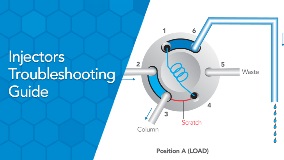
-
Performance, Reliability, Repeatability
by IDEX Health & ScienceWith a virtually unlimited lifetime and superior performance, Semrock optical filters help ensure the best possible images. They may be the easiest and least expensive way to improve the performance of your microscope when compared to the cost of upgrading cameras and objectives.
Full story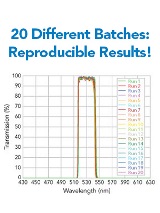
-
Flatness of Dichroic Beamsplitters Affects Image Quality
by IDEX Health & ScienceOptical filters are generally comprised of multi-layered thin-film coatings on plane, parallel glass substrates. All Semrock filters use a single substrate with coatings on one or both sides to maximize transmission and reliability. The glass substrate is not always perfectly flat before coating and the intrinsic stress of hard coatings can cause slight bending of the substrate. Fortunately, this bending has no noticeable effect on light transmitted through an optical filter at or near normal incidence. For light incident at high angles of incidence, like for a 45° dichroic beamsplitter, the bent substrate creates a slight divergence of the transmitted beam axis similar to the effect of a small wedge in the substrate. Unless the radius of curvature is very small (much less than one meter) the quality of the transmitted beam remains largely unaffected.
Full story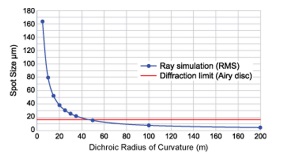
-
Transition Width and Edge Steepness
by IDEX Health & ScienceTransition width and edge steepness are two terms often used to describe the spectral properties of edge filters and it is important to know that these two terms are related, but not interchangeable. Transition Width is the maximum distance between the laser line (where OD > 6) and the 50% transmission point. Edge Steepness is the actual steepness measured from the OD 6 point to the 50% transmission point.
Full story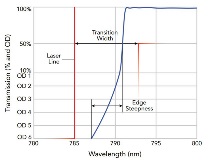
-
Semrock Filters Don't Burn Out
by IDEX Health & ScienceAll Semrock filters are hard coated with sophisticated Ion Beam Sputtering (IBS) technology, resulting in patented state-of-the-art filters with extremely durable hard glass coatings on a single hard glass substrate. No absorbing glass and no lamination is necessary. The result is exceptionally durable "no burn out" fluorescence filters of the highest performance.
Full story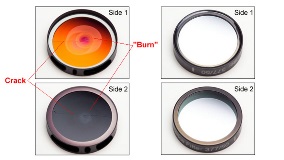
-
Quality Inspection Process
by IDEX Health & ScienceAll Semrock filters are inspected in accordance with industry standards established for optical components. Learn how our team inspects each filter.
Full story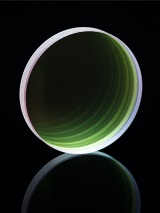
-
Measuring Light with Wavelengths and Wavenumbers
by IDEX Health & ScienceThe "color" of light is generally identified by the distribution of power or intensity as a function of wavelength λ. Visible light has a wavelength that ranges from about 400 nm to just over 700 nm. Sometimes it is convenient to describe light in terms of units called "wavenumbers," where the wavenumber w is typically measured in units of cm-1 ("inverse centimeters") and is simply equal to the inverse of the wavelength, and is therefore proportional to frequency.
Full story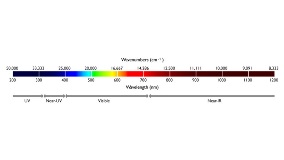
-
RazorEdge Filter Layout for Raman Spectroscopy
by IDEX Health & ScienceIn many high-performance Raman systems with microscopic imaging capabilities or highly sensitive remote probes it is desirable for the excitation laser beam and the Raman-shifted signal light to share a common light path. Illustrations in this tech note describe the two layouts and the ideal filters for each system.
Full story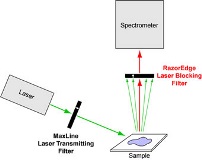
-
Filter Packaging
by IDEX Health & ScienceSemrock uses individual PET-G packaging for standard-size catalog filters. This packaging allows Semrock to keep the parts cleaner, reduce potential defects caused by shipping & handling, and utilizes 100% recyclable PET materials.
Full story